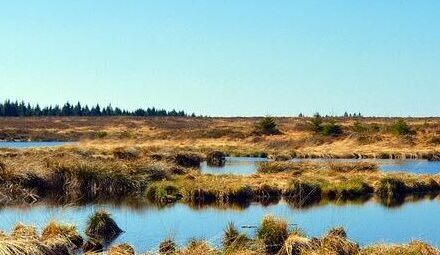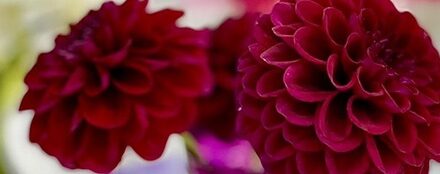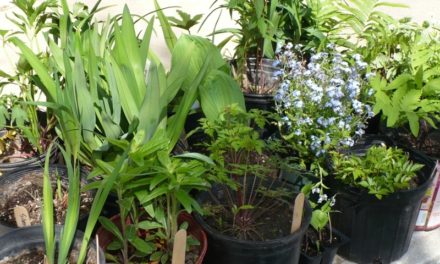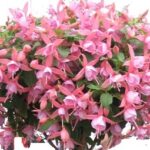Aeoniums in Habitat and Cultivation
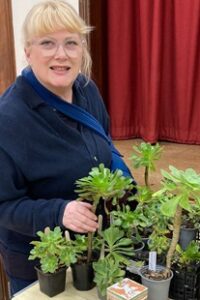 On Tuesday 31 October ODGC welcomed Mellie Lewis, holder of the National Collection of Aeoniums. Mellie has been studying and collecting Aeoniums for almost 40 years and has approximately 300 varieties.
On Tuesday 31 October ODGC welcomed Mellie Lewis, holder of the National Collection of Aeoniums. Mellie has been studying and collecting Aeoniums for almost 40 years and has approximately 300 varieties.
Aeoniums originate from the Macaronesian islands, Canaries, Cape Verde and Madeira and can also be found in the Yemen and Morocco. Most are endemic to the Canaries where they owe their success on this harsh volcanic terrain to moisture bearing Trade Winds. The plants, members of the Crassulaceae family, have succulent leaves borne in rosettes with cilia along the leaf edges which trap moisture. The more mountainous the island, the more diverse the species. This is called adaptive radiation whereby a species has adapted to its environment whether this be dry and hot or the moist evergreen laurel cloud forest. They can even grow on terracotta pantiles where the leaf litter provides sufficient nutrient. Fuerteventura is the only Canary Island without Aeoniums.
Size and habit varies enormously. Some, the A. arborea spp, can be 2 metres high sporting a 1 metre high inflorescence which may be yellow, pink or white. These are pollinated by bees and small lizards which scramble over the plants in search of insects. They are monocarpic and die after flowering, scattering millions of seed. Others are stalkless, for example A. tabuliorme, others have a sprawling habit like A. haworthii.
Aeoniums are threatened by invasive plants, Agave, Kalanchoe and Opuntia and by animals, feral goats and rabbits which damage ancient water systems. The creation of new roads to promote tourism destroys habitat and the climate is no longer predictable resulting in the abandonment of farmsteads.
The first record of Aeoniums found in the UK is an illustration dated 1699 in the Duchess of Beaufort’s botanical collection. They have become very popular in recent years, many resulting from crosses with purple black A. swartkop discovered in a nursery in The Netherlands in the 1950s. They are easy to propagate from stem cuttings or seed. Members were warned to beware imports of Korean and Chinese variants as these are not new cultivars but result from irradiation or grafting.
Mellie’s fascinating talk was accompanied by a wonderful slideshow of these striking architectural plants growing wild in the Canary Islands.
Ghislaine Arundale

